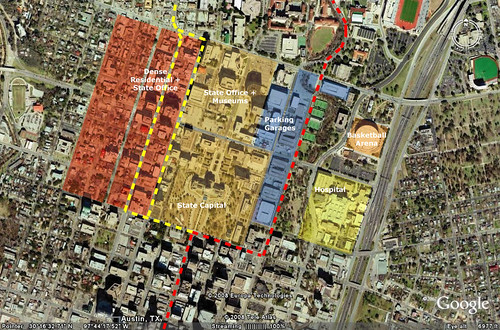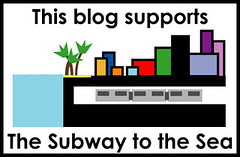Q: So you don't advocate some sort of wholesale getting rid of the automobile or that people will on a large scale in small or midsize cities not use cars at all?A: No. The ideal city, I reject.
You can have carfree areas. I would say the city center of Portland is car free in that sense. There is a freedom from the car. You don't have to have a car there. You can live there, you can work there, in a way that enables you to have that freedom.
He also discusses the subsidies for automobiles that only recently have been gaining attention such as health care for auto accidents and big oil.
But to attack transit as being subsidized whilst not seeing the subsidies for car dependence is not a level playing field. We do those numbers in Australia, they're similar in America.And the kicker is he punches a hole in the freeway capacity issue. We've got to stop building wider freeways. He even suggests ripping them down like the Embarcadero or such as what should happen to the Viaduct in Seattle. I'm not sure if that is palatable for interstate highways but who am I to keep anyone from dreaming big. It's amazing how much tax base is taken away by these huge roads that move cars as fast as possible through cities instead of creating value.The politics is changing. We can no longer subsidize the increase in VMT - we have to subsidize the decrease in VMT. There is no choice in that.
Q: We have a $4 billion proposal to replace a six-lane highway bridge on Interstate 5 with a new bridge that would have six highway lanes, plus six auxiliary lanes. It would also extend light rail to the northern suburbs and have generous pedestrian facilities. It's been billed as having a little bit for everyone. Is that kind of project worth pursuing?This video is great. My favorite quote is when he states you are basically working one day a week to pay for your transport. I'm gonna make it Friday.
A: Four billion dollars is what you're going to need for building these transit lines and subcenters. Keeping the traffic moving is what you have to stop doing. VMT (vehicle miles traveled) reductions are not going to be promoted by that bridge. There will be a whole series of freeways taken down when they reach the end of their life in cities around the world. The one in Seoul (South Korea) came down. Now it's a beatiful river, and a park with transit. The mayor who did it is now the president.
Q: So increase rail transit, to the detriment of roads?
A: Any decent rail system can carry eight lanes of traffic equivalent - on this narrow little track. It's a capacity issue. You can only carry 2,500 people an hour down a freeway lane. You can get 50,000 an hour on a rail system - 20 times as much. That space is enormously valuable. There's no doubt in my mind that's what you've got to do.



